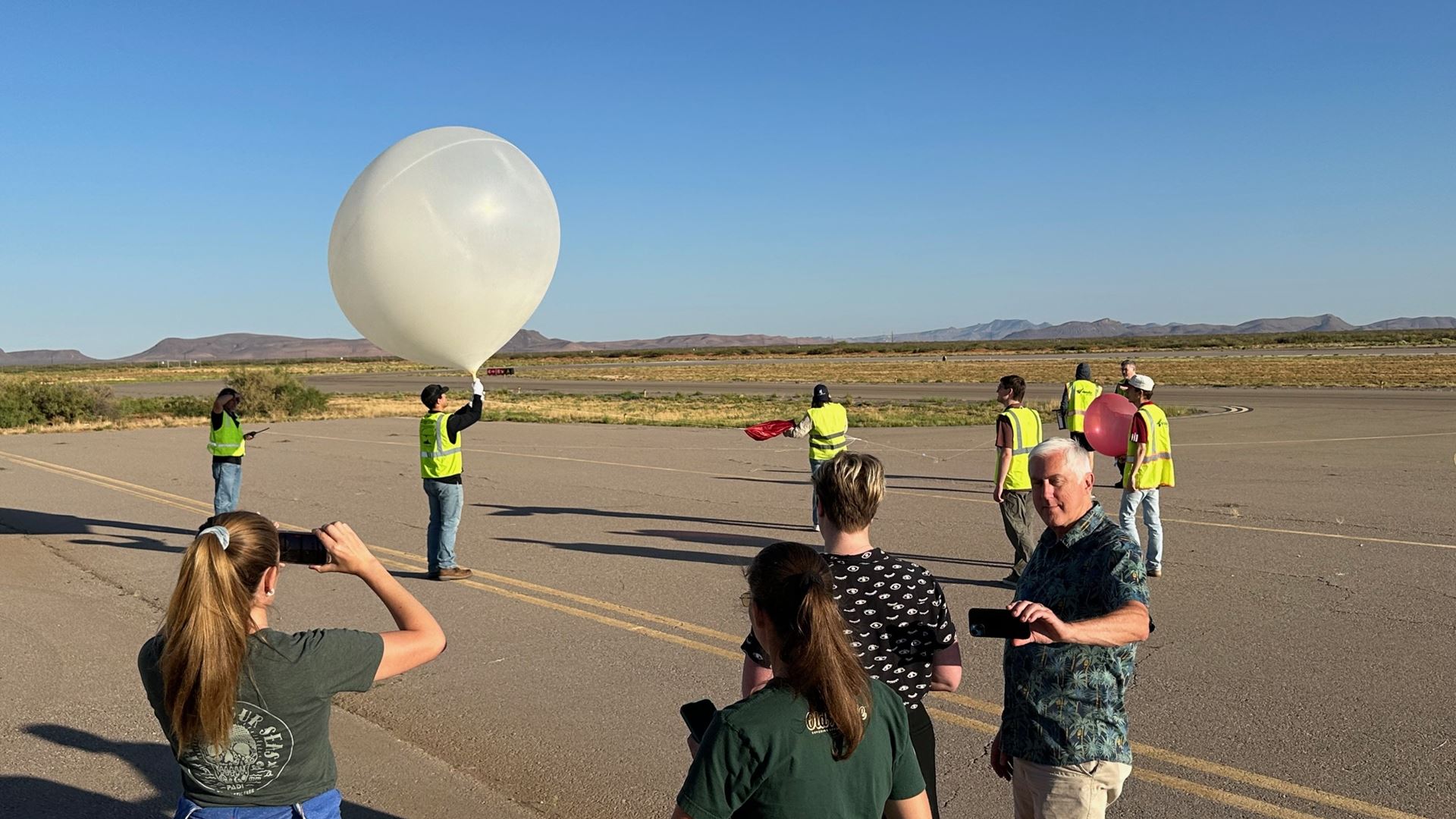For a third consecutive year, members of the New Mexico State University Physical Science Laboratory, New Mexico Space Grant Consortium and Teachers in Space collaborated to expand the Launch New Mexico to Space program, which trains teachers in space-related topics.
“We are hoping to engage students to represent a future workforce that matches our state demographics. The only way to accomplish this is by being intentional about it and collaborating with people and organizations that work well together; as the adage goes, it really takes a village,” said Paulo Oemig, New Mexico Space Grant Consortium director.
Due to demand, this summer a pair of four-day professional learning opportunities were held at the Challenger Learning Center of Las Cruces with 60 teachers participating from Title 1 schools throughout New Mexico. The program recruited teachers from tribal, rural schools and underserved communities. Teachers from California, Florida, Georgia, Iowa, Maine and Tennessee also attended the workshops.
“Ultimately, the goal of these workshops is to get students, as early as possible, engaging in real space science projects,” said Noah Luogameno, Teachers in Space project manager. “We want K-12 schoolteachers to be the gateway for students to become interested in STEAM pathways, and to show them that not only can they be engineers and scientists one day, but they are capable of engineering and science right now.”
The workshops introduced participants to all aspects of planning and conducting high-altitude balloon missions. PSL helped conduct two missions from the PSL UAS Flight Test hangar at the Las Cruces International Airport. Participants successfully flew CubeSat experiments as payloads to high altitude, recovered the payloads, and analyzed the data collected by those payloads.
“From my perspective, I find it quite rewarding to share experiences, promote cutting-edge research, and hopefully along the way transfer that knowledge to the next generation,” said Drew Denney, PSL lead research and development engineer.
A goal of the workshop is to inspire participants to continue learning about and conducting high-altitude balloon missions on their own and with their students.
“Any of us could have 3D printed a CubeSat frame and installed some Arduino components. But we would have missed out on the opportunity to learn from each other and collaborate with colleagues from across the country while taking our CubeSats to a whole new level. It was the difference between a simple black and white photo and the millions of colors we see in the real world,” said Markus Ford, technology teacher at Surry Elementary School in Surry, Maine.
“Teachers in Space continues to provide support throughout the upcoming schoolyear to help teachers and their students through the process of building their unique CubeSat experiments,” Luogameno said. “Once they have met the various engineering milestones, and have a functioning CubeSat, they will send it back to us, and we will fly it on one of various flight platforms, including a high-altitude balloon, the record-breaking Perlan stratospheric glider, or its record-holding tow plane, Egrett. We will then take the student-designed experiments and build them into larger 2U CubeSats that will fly on Blue Origin’s New Shepard payload missions.”
“I’m excited to bring CubeSat development back to my students,” Ford said. “This kind of hands-on training is so important when it comes to inspiring the next generation.”
“In working with organizations such as Teachers in Space and supporters of NMSGC, we work toward engaging students from socioeconomically disadvantaged communities in NASA’s mission and inspiring them to apply the skills of science and engineering in their daily lives,” Oemig said. “Alignment between the educational system and industry in New Mexico is important, equally important is that we all work together to see our diversity reflected in the STEM workforce. Diversity drives innovation and will strengthen the future economy in our state.”
Video from the onboard camera of the high-altitude balloon mission is available at https://youtu.be/VSF-5B4O2ww.
